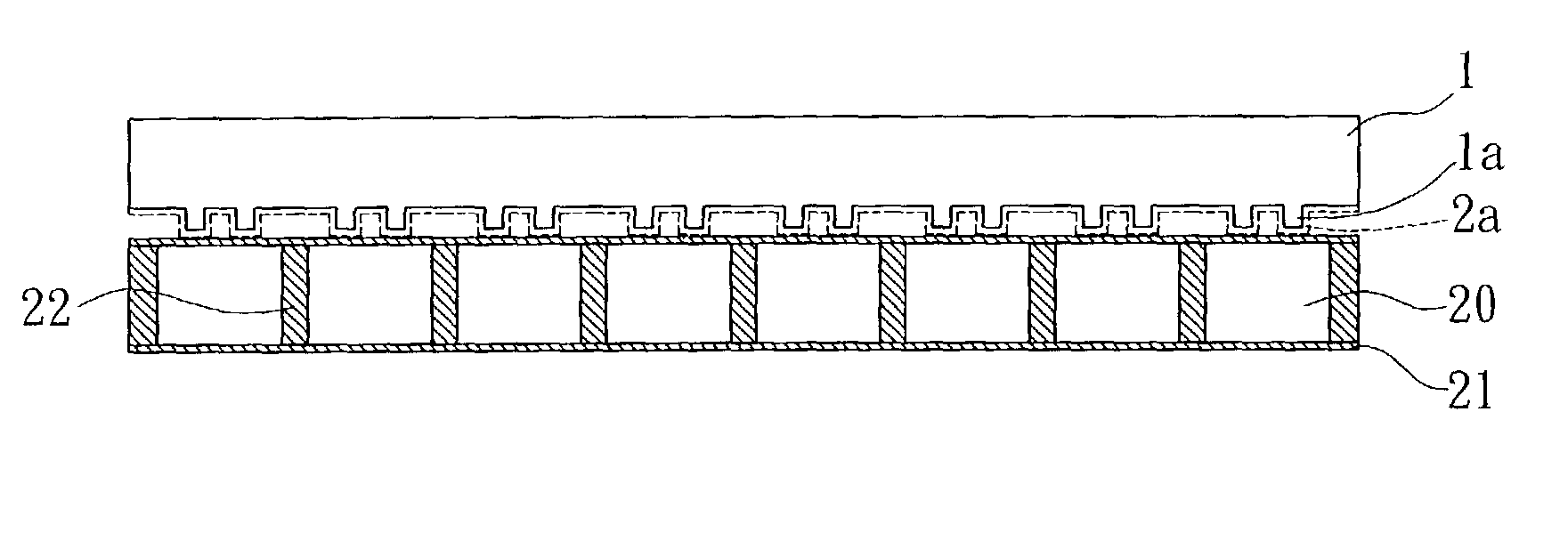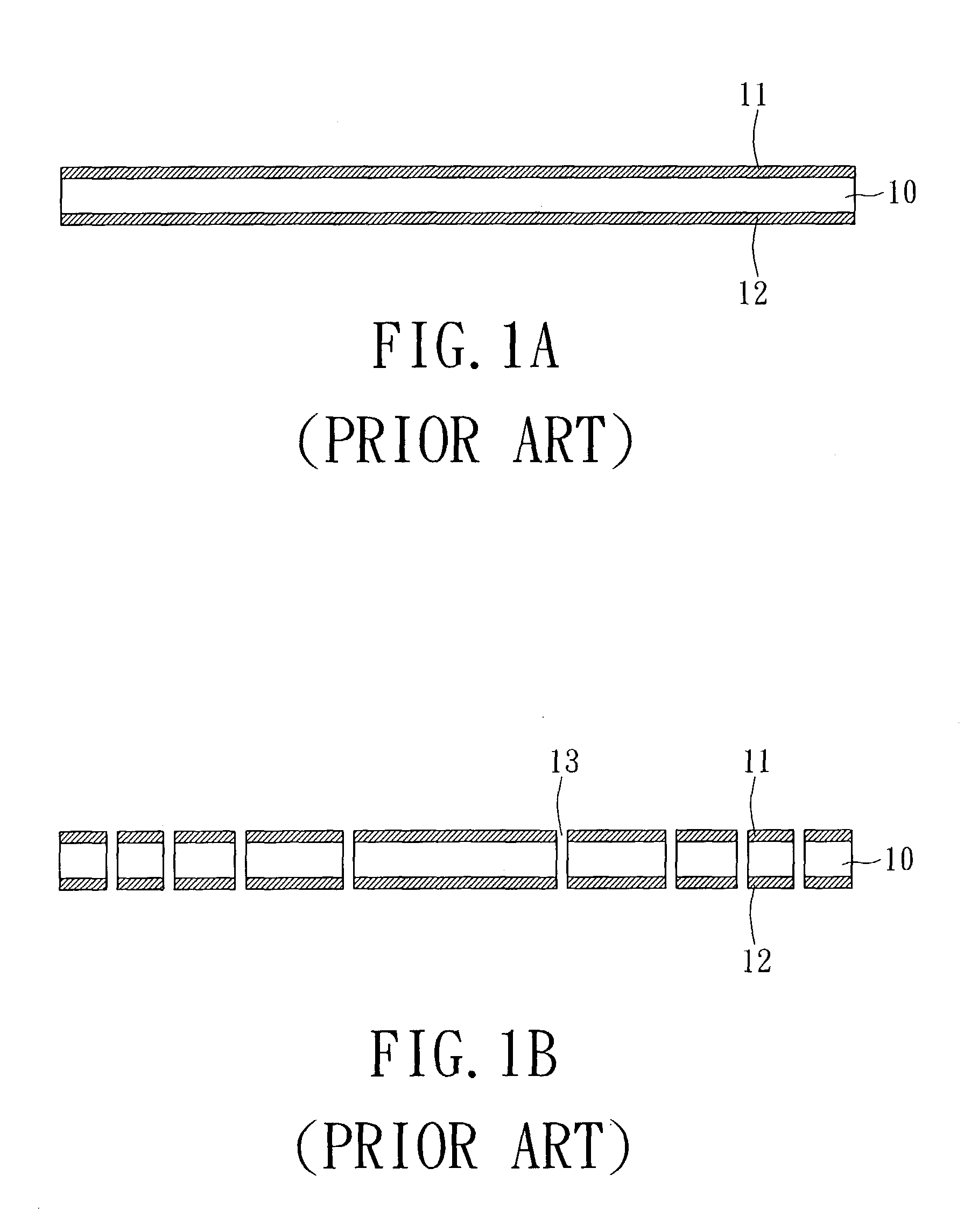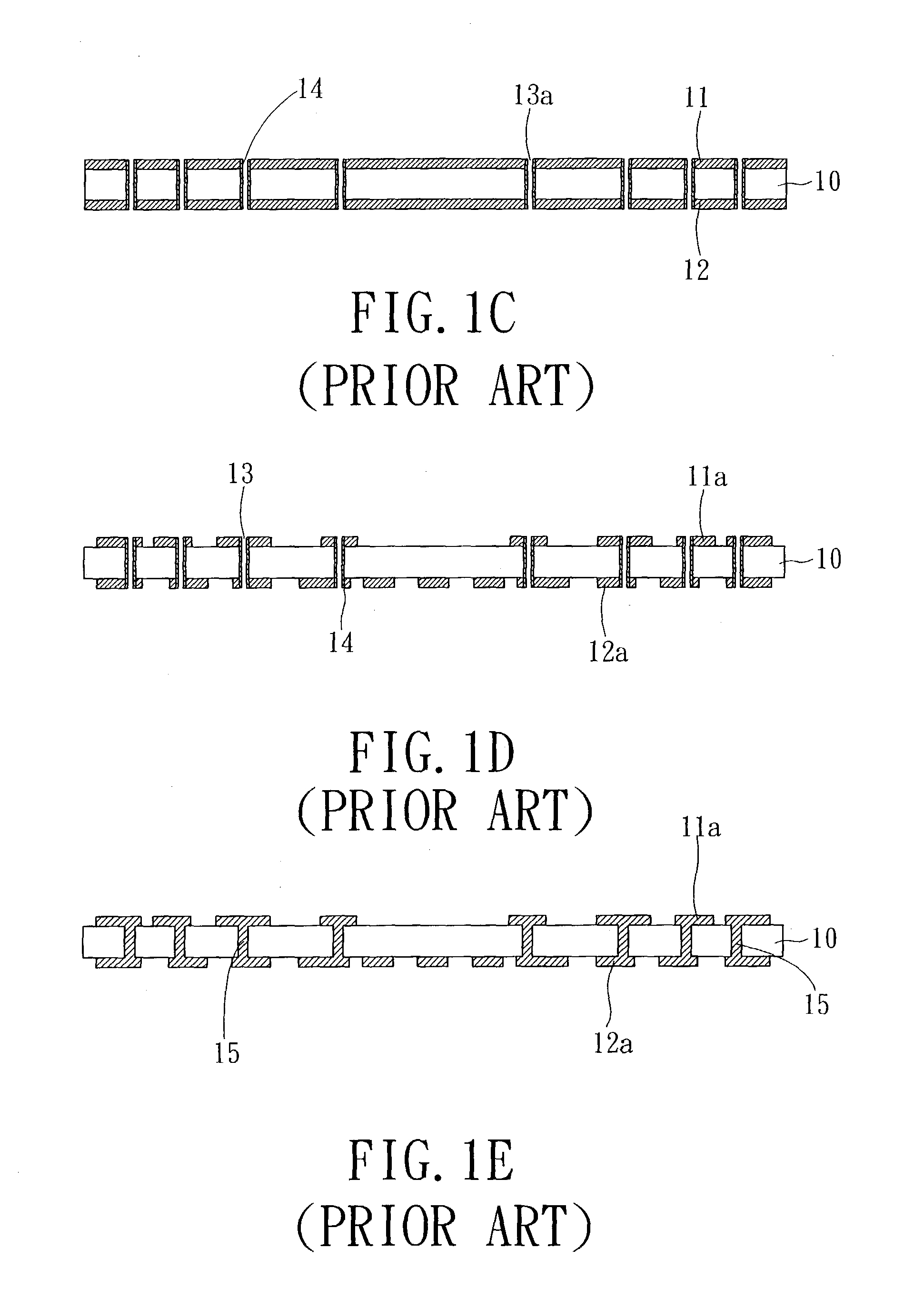Ultra fine patterning process for multi-layer substrate
a multi-layer substrate and ultra-fine technology, applied in photomechanical devices, instruments, nanoinformatics, etc., can solve problems such as time-consuming and expensive, poor reliability, and poor yield
- Summary
- Abstract
- Description
- Claims
- Application Information
AI Technical Summary
Benefits of technology
Problems solved by technology
Method used
Image
Examples
first embodiment
[0030] Please refer to FIG. 2A to FIG. 2N, which are showing the ultra fine patterning process for multi-layer substrate by using selective deposition resist of the present invention, which comprising,
[0031] (a). providing a stamp 1 formed by a master mold, the stamp is made of elastomeric base; such as poly dimethalsiloxane (PDMS). The stamp I has been patterned with ultra fine pattern la which is corresponding to the circuit layout pattern on the substrate produced in a succeeding process; dipping the stamp 1 in a self-assembled monolayers solution 2, such as Octadecyltrichlorosilane, RsiCl3, Rsi(OCH3) etc. that are characteristic of inhibiting metal nucleation as shown in FIG. 2A.
[0032] (b). removing the stamp 1 from the self-assembled monolayers solution 2, as a result, a film characterized by metal nucleation inhibition is attached on the stamp 1, which is self-assembled monolayers (SAM) 2a as shown in FIG. 2B.
[0033] (c). providing one substrate 20, which can be a ceramic subst...
second embodiment
[0045] Please refer to FIG. 3A to FIG. 3G, which are showing the ultra fine patterning process for multi-layer substrate by using selective deposition resist of the present invention, which comprising,
[0046] (a). providing one substrate 31, which can be a ceramic substrate, a plastic substrate, a soft material substrate, a metal substrate, a glass substrate, a circuit board or a core sheet; and some stuffed vias 32 penetrating through the substrate 31 have been formed on the predetermined positions on the substrate 31; placing a dielectric layer 33 on the surface of the substrate 31, which is a photo-imagible dielectric one or a laserable layer, as shown in FIG. 3A;
[0047] (b). if the dielectric layer 33 is a photo-imagible dielectric one, the process of Exposure and Photolithography will be applied further; if the dielectric layer 33 is a laserable dielectric layer, the laser drilling will be applied to make some pattern on the dielectric layer 33 to form some circuit layout, includ...
PUM
 Login to View More
Login to View More Abstract
Description
Claims
Application Information
 Login to View More
Login to View More - R&D
- Intellectual Property
- Life Sciences
- Materials
- Tech Scout
- Unparalleled Data Quality
- Higher Quality Content
- 60% Fewer Hallucinations
Browse by: Latest US Patents, China's latest patents, Technical Efficacy Thesaurus, Application Domain, Technology Topic, Popular Technical Reports.
© 2025 PatSnap. All rights reserved.Legal|Privacy policy|Modern Slavery Act Transparency Statement|Sitemap|About US| Contact US: help@patsnap.com



